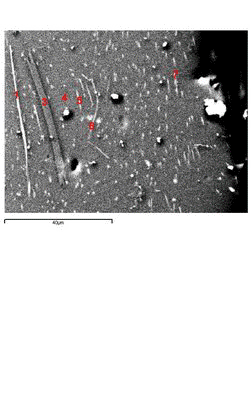A novel method for dating obsidian artifacts

The SIMS-SS Dating Method |
Introduction The Obsidian Hydration Dating (OHD) method is based upon modelling the rate of water diffusion into a natural glass surface and establishing a diffusion coefficient for this process. It is accepted that the rate of water diffusion, the diffusion coefficient, is exponentially dependent on temperature and exhibits an Arhenius type behaviour. A variety of strategies have been developed over the years to calibrate the movement of ambient water into glass. However, the development of calibrations to compensate for variation in external variables has proven to be difficult. This has been the major impediment to making OHD a fully chronometric dating method comparable to radiocarbon dating. We have evaluate a procedure for obsidian age estimation that is based upon the depth and shape of the hydrogen diffusion profile as determined by Secondary Ion mass Spectrometry (SIMS). We have termed this approach SIMS-SS since the primary input variable, which controls the water in the mass of obsidian, is the saturation achieved in the surface layer (SS). To demonstrate the accuracy of this method, we have selected 31 case samples (figure 4) from around the world that incorporate a wide variety of different obsidians and environmental regimes.
Water Diffusion in Obsidian The diffusion of water in obsidian takes place with two mechanisms. The model of water diffusion in amorphous silicates developed by Doremus is the most appropriate descriptor of water diffusion in glass at low temperature because it accounts for the patterning in much of the experimental data. In a vapour environment molecular water enters the glass network and reacts with the silicon-oxygen network to form SiOH groups: Si-O-Si + H2O = SiOH + OHSi As the molecular water moves through the glass the newly formed OH groups remain relatively fixed. It is assumed that the OH group formation lags well behind the movement of mobile water molecules but eventually reaches equilibrium. The diffusion of water in amorphous silicates is also strongly correlated with the concentration of water within the surface hydration layer and is referred to as concentration-dependent diffusion.
The SIMS-SS dating method in brief In order to model the form of the diffusion profile Crank’s theoretical diffusion curves were consulted. They derive from the solution of a differential equation that describes the diffusion process, based on the modelling of the water distribution into the obsidian surface. A detailed presentation of the mathematics involved is given elsewhere, here in brief we introduce the main points of the deduced diffusion age equation.
Using the end product of diffusion, a phenomenological model has been developed, based on certain initial and boundary conditions and appropriate physicochemical mechanisms, that express the H2O concentration versus depth profile as a diffusion / time equation. The modelling of this diffusion process is a one-dimensional phenomenon, whereas the H2O molecules invade a semi-infinite medium in a perpendicular direction to the surface. The model is based on the idea that in the SS layer met near the sample surface, that is, in the first half of the sigmoid curve, the C is assumed as constant along a very short distance. Thereafter C gradually decreases following the trend of the sigmoid. The dating equation, incorporating all the abovementioned parameters is:
where, Ci is the intrinsic concentration of water, Cs the saturation concentration, dC/dx the diffusion coefficient for depth equal to zero, Ds,eff the effective diffusion coefficient as the effective value of the diffusion coefficient Ds for C=Cs and k is derived from the family of Crank’s curve (figure 2).
The SIMS-SS dating procedure First Stage: To calculate the Saturation Layer's attributes. They are several deferent ways to locate the Saturation Surface layer.
Second Stage: To calculate the best 3rd order fitting polynomial of the SIMS profile. Third Stage: We calculate the k value of the age equation, by comparing the non-dimensional plot of the profile with the Crank's curves (figure 2). Final Stage: Implantation of the above mentioned parameters (Cs,Xs,Ci,k, Ds, dc/dx) to the age equation, calculates the age in years before prepsent and error is evaluated from the Taylor's Rules for the error propagation.
Criteria for obtaining a correct age result 1. The artifact to be analyzed by Atomic Force Micorscopy (AFM) and Secondary Electron Microscopy (SEM) for the investigation of the surface. A surface area with small roughness is needed for the application of the SIMS measurement. 2. The investigation of the SIMS profile for high disturbed areas. Such profiles indicate:
|